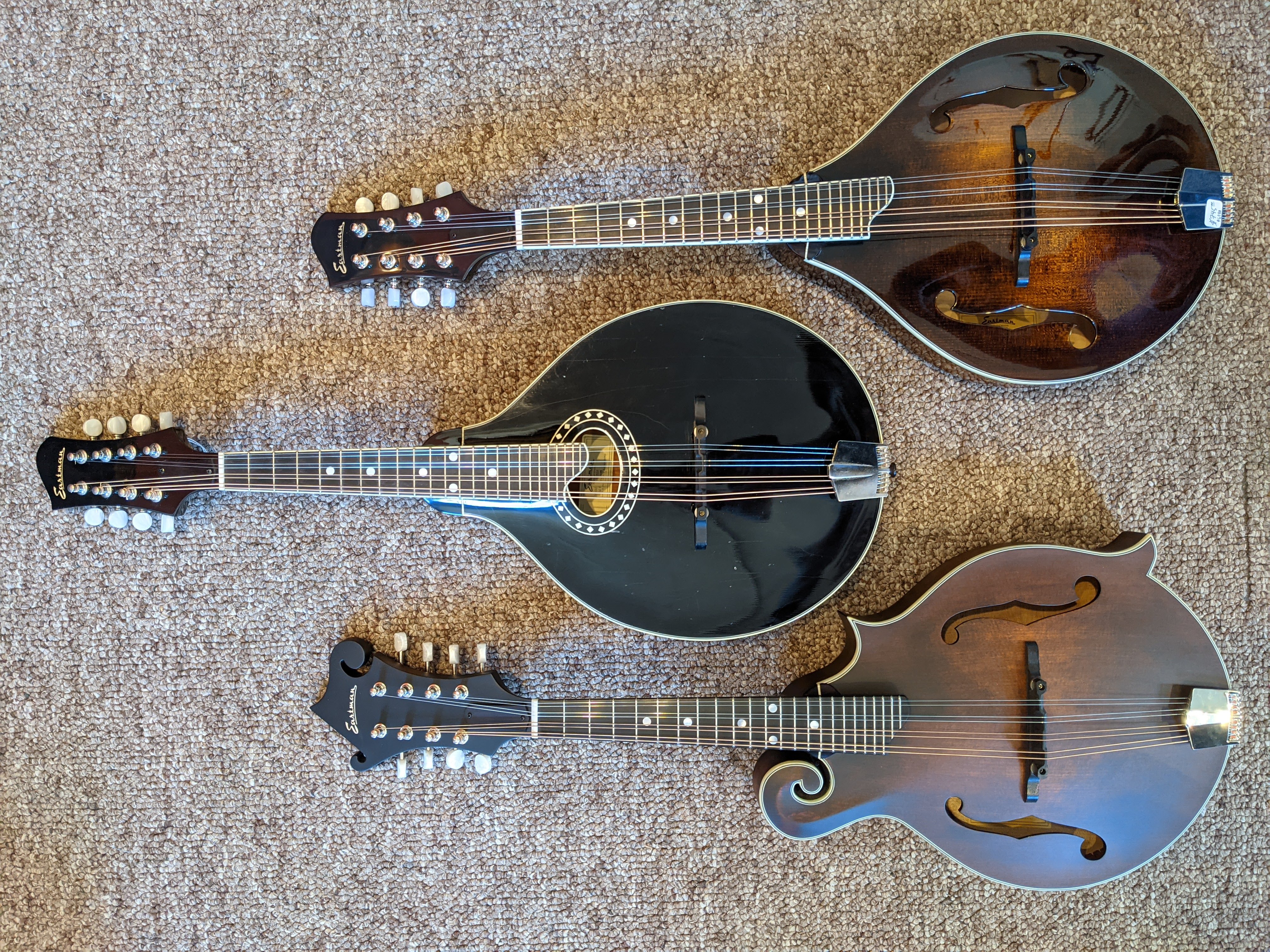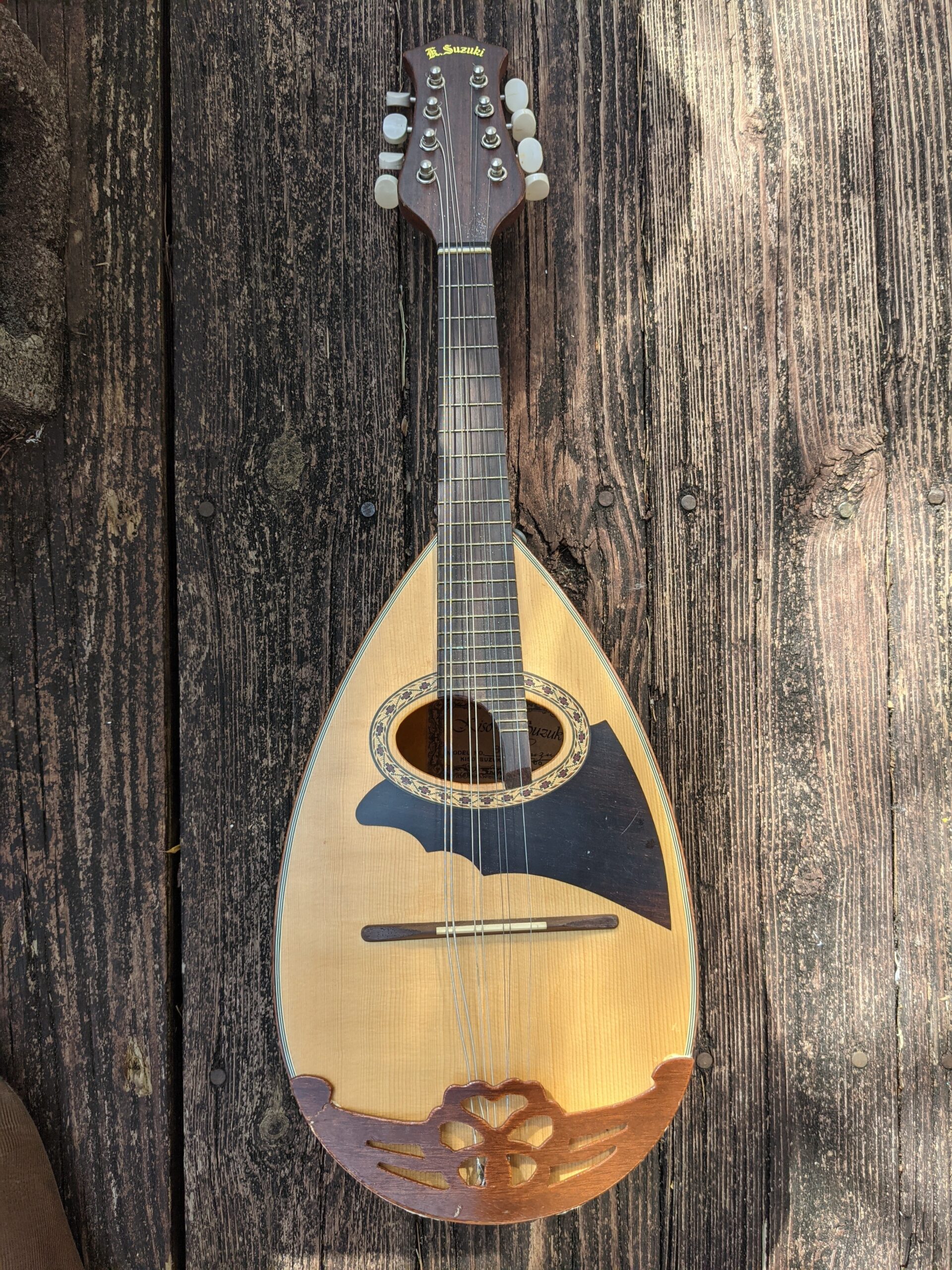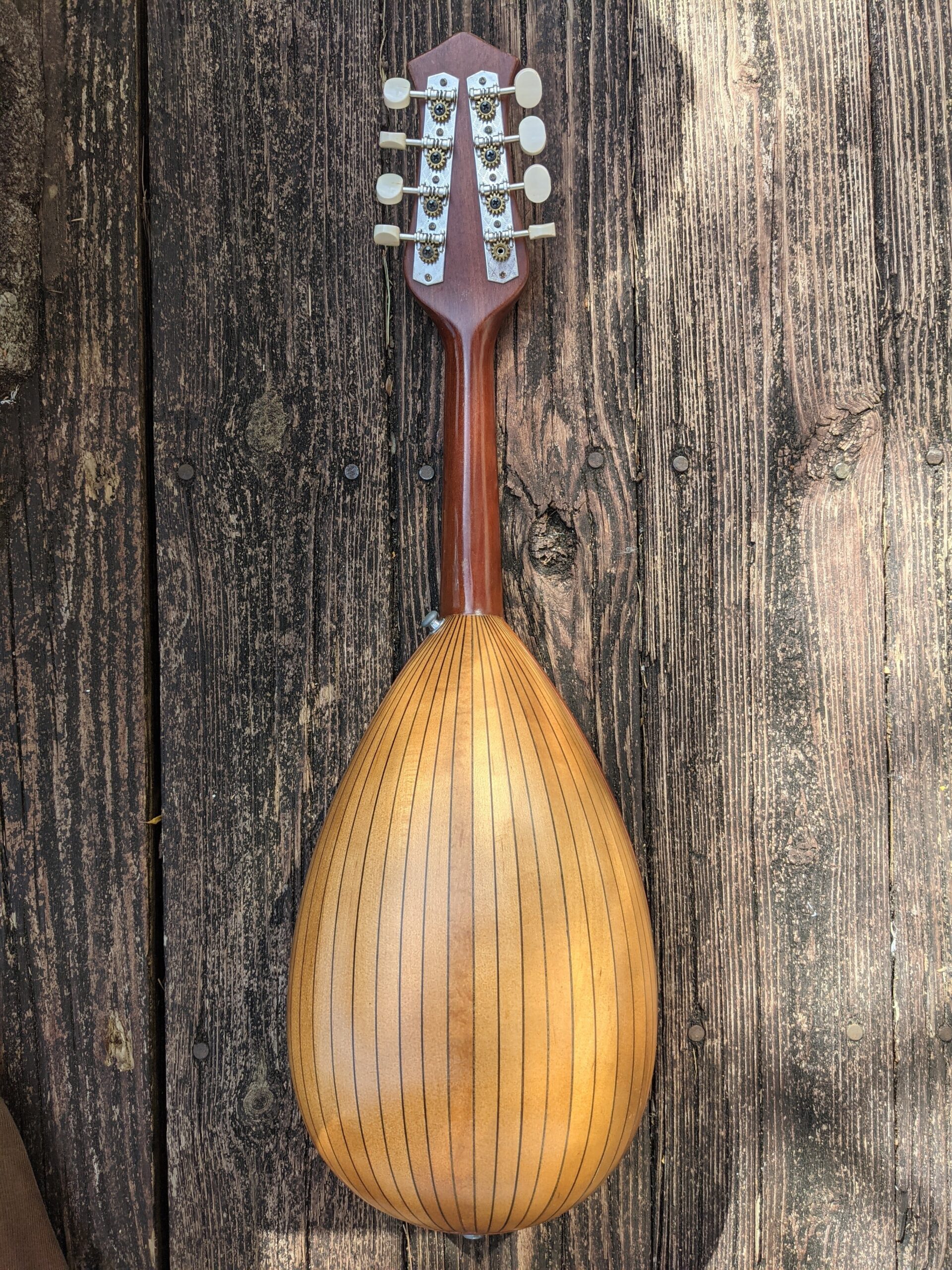
Mandolins at Vintage Music
The strings of a mandolin are tuned to the same pitches as those of the violin (G-D-A-E), although it is distinguished by its doubled-up strings for a total of eight strings that produce a great deal of sound for such a small body. Like the guitar, the mandolin is part of the lute family and some of its early ancestors include the Arabic oud. As early lute instruments traveled across the Mediterranean and into Europe, new variations developed, such as the mandora that emerged in the sixteenth century. Finally, in the mid-nineteenth century, the Neapolitan mandolin—more commonly known as a bowlback mandolin—developed in Italy. Mandolins became wildly popular towards the end of the nineteenth century, when mandolin orchestras (featuring mandolin, tenor mandolin, mandola, mandocello, and other members of the mandolin family) took off in popularity in communities and on entertainment circuits. European immigrants who brought mandolins with them to the Americas in the same time period likewise formed their own new mandolin orchestras. In the South, bowlback mandolins were nicknamed “taterbug” mandolins for their shape and striped resemblance to the Colorado potato beetle (Leptinotarsa decemlineata)—a common garden pest of the region.


Neapolitan, bowl back, or “taterbug” mandolin

Colorado potato beetle (Leptinotarsa decemlineata), also known as “taterbug”
Atlanta Mandolin Orchestra performance
It wasn’t until the early twentieth century that the shallower, archtop mandolin—most common today—developed in the U.S. It was pioneered by Orville Gibson in 1910, with additional contributions made by Lloyd Loar in the 1920s. The Gibson Company’s popular F-style mandolin borrowed features from the fiddle including f-shaped sound holes, scroll (spiral-carved design on the body and/or headstock), and an archtop design that made it stronger and louder than its bowlback predecessor. Although mandolin orchestras fell in popularity at this time, a few decades later Bill Monroe (1911-1996)—known as the “father of bluegrass”—popularized mandolin again using the Gibson F-5 model archtop mandolin. Mandolin is present in other genres of Appalachian music as well. In old-time music, mandolin takes on a rhythm-centric role and supports the melodic lead of fiddle. Mandolin has also been part of the blues tradition, complementing instruments like guitar and bass. In fact, as a young boy, Bill Monroe played guitar with an African American blues fiddler named Arnold Schultz, who’s playing would come to influence the new genre of bluegrass music that Monroe pioneered on the mandolin. Whatever the style of music, mandolin adds a distinct sound to the mix.
Blues mandolinist Yank Rachell performing with blues guitarist Sleepy John Estes (1966)
Bill Monroe & His Bluegrass Boys performance (1981)
JOKE
Q: A guitar player and a mandolin player slip and fall off a cliff. Which one hit the ground first?
.
.
.
.
.
.
.
.
.
.
.
.
A: The guitar player. The mandolin player had to stop halfway and tune.
Listening
REFERENCES
“A Mandolin By Any Other Name: Ancient Origins.” ArtistWorks. Accessed February 8, 2021. https://my.artistworks.com/blog/mandolin-any-other-name-ancient-origins.
Cantwell, Robert. “Ritual, Icon, and Image.” Essay. In Bluegrass Breakdown: the Making of the Old Southern Sound, 221–25. Urbana: University of Illinois Press, 2003.
DelGrosso, Rich. Introduction. In Mandolin Blues: From Memphis to Maxwell Street. Milwaukee, WI: Hal Leonard, 2007.
Dobney, Jayson Kerr. “Archtop Guitars and Mandolins.” In Heilbrunn Timeline of Art History. New York: The Metropolitan Museum of Art, 2000–. http://www.metmuseum.org/toah/hd/argu/hd_argu.htm (September 2016)
Gorlinski, Virginia, ed. “Mandolin.” Encyclopædia Britannica. Encyclopædia Britannica, inc. Accessed February 8, 2021. https://www.britannica.com/art/mandolin.
MIMphx (Musical Instrument Museum). “Mandolins in America | Virtual Museum Curator Tour.” YouTube Video, 1:10. April 16, 2020. https://www.youtube.com/watch?v=Ns8AUMtWPnE
